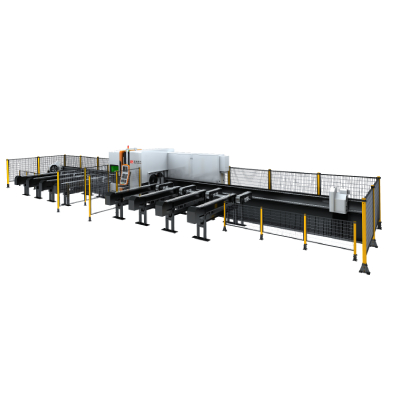****
In recent years, the manufacturing and design industries have seen a significant transformation driven by advancements in technology. Among these advancements, dual use laser cutting has emerged as a versatile and efficient solution that can cater to a wide array of applications. Dual use laser cutting refers to the capability of laser cutting technology to work with various materials, including metals, plastics, wood, and even textiles, allowing manufacturers and designers to optimize their production processes while enhancing creativity. This article will delve into the advantages and applications of dual use laser cutting technology, showcasing why it has become an essential tool in contemporary manufacturing.
One of the most significant benefits of dual use laser cutting is its incredible versatility. Traditional cutting methods often require different machines or tools to work with various materials, leading to increased costs and downtime associated with switching between processes. In contrast, dual use laser cutting systems can be easily adapted to cut different materials by simply changing the settings or the type of laser employed. For instance, CO2 lasers are ideal for cutting non-metal materials like wood and acrylic, while fiber lasers excel at working with metals such as stainless steel and aluminum. This flexibility not only streamlines the manufacturing process but also reduces the need for extensive equipment investments.
Another compelling advantage of dual use laser cutting is its precision and accuracy. Laser cutting employs a focused beam of light that can easily achieve intricate and complex designs with minimal tolerance levels. This level of precision is particularly crucial in industries that require detailed components, such as aerospace, automotive, and electronics. The ability to produce accurate cuts means fewer defects in products, which translates to lower material wastage and higher quality output. As businesses strive to uphold stringent quality standards, dual use laser cutting technology becomes indispensable in maintaining these benchmarks.
Moreover, the efficiency of dual use laser cutting significantly enhances productivity. Traditional cutting methods can be time-consuming, often requiring extensive manual labor and multiple stages for processing materials. Laser cutting, on the other hand, is primarily automated, allowing for quicker production times without sacrificing quality. With capabilities like continuous operation and the ability to cut multiple layers simultaneously, manufacturers can increase their output while reducing lead times, giving them a competitive edge in the market.

Exploring the Advantages and Applications of Dual Use Laser Cutting Technology in Modern Manufacturing and Design Processes
Beyond efficiency and precision, dual use laser cutting contributes to sustainability—a crucial consideration in today’s manufacturing landscape. By minimizing material waste through precise cuts and optimizing the use of raw materials, businesses can adhere to more sustainable practices. The ability to work with recycled materials, such as repurposed metals and plastics, further enhances the environmental benefits associated with this technology. As industries grapple with the pressing issue of climate change, integrating dual use laser cutting into their operations is a proactive step towards achieving sustainability goals.
Dual use laser cutting technology also empowers designers. In the creative sector, where customization is paramount, the ability to easily switch between materials allows for greater experimentation and innovation. For instance, designers can create unique prototypes with various materials, experimenting with textures and aesthetics that were previously labor-intensive or costly to produce. Examples of this can be seen in architectural models, where intricate designs often combine different materials—an area where dual use laser cutting shines.

Exploring the Advantages and Applications of Dual Use Laser Cutting Technology in Modern Manufacturing and Design Processes

Exploring the Advantages and Applications of Dual Use Laser Cutting Technology in Modern Manufacturing and Design Processes
The applications of dual use laser cutting are vast and varied. In the woodworking industry, for instance, artisans utilize this technology for creating bespoke furniture and detailed carvings with ease. In the fashion sector, laser cutting allows for the production of intricate patterns for garments and accessories, pushing the boundaries of textile design. In industrial manufacturing, companies leverage dual use systems for crafting components ranging from automotive parts to electronic enclosures, emphasizing the technology’s expansive reach.
As technology continues to advance, the role of dual use laser cutting in modern manufacturing and design will only grow. With its versatility, precision, efficiency, and sustainability benefits, this innovative approach to laser cutting is proving to be a game-changer for businesses across numerous sectors. As industries adapt to the demands of a rapidly evolving market, integrating dual use laser cutting into production lines signifies a commitment to quality, efficiency, and creativity, ensuring a bright future for manufacturers and designers alike. Flatbed Laser Cutting Machine


